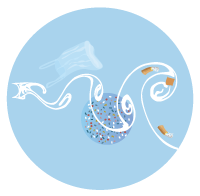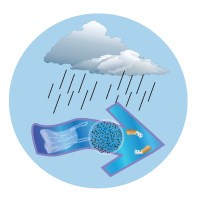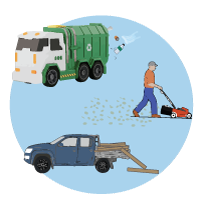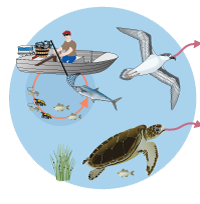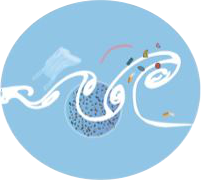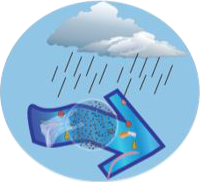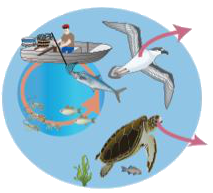|
|
RoadsRoadways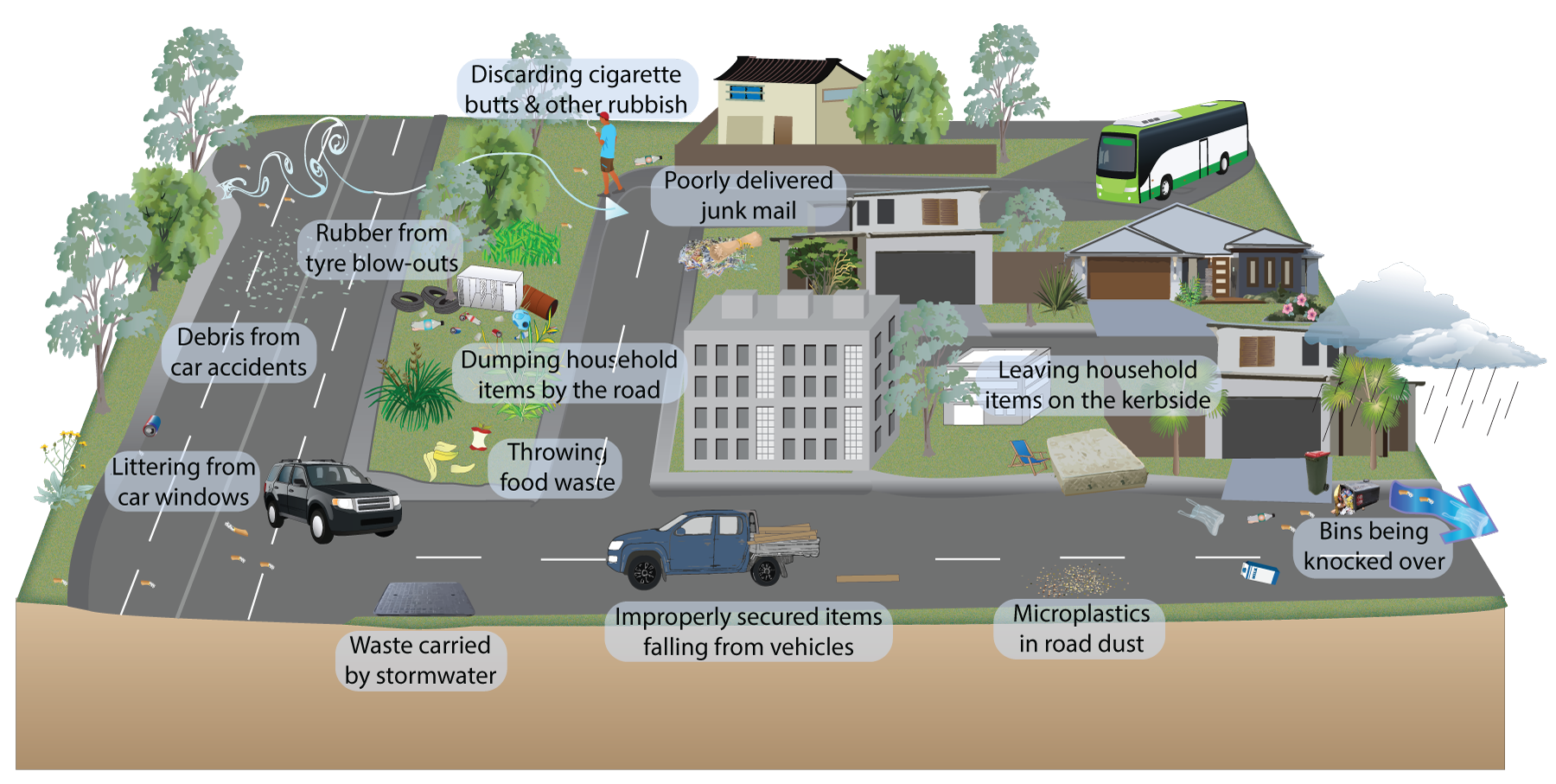 Many items of litter are found on and around roadways. This may occur due to:
Roadside littering can be accidental, careless, or intentional. Accidental littering occurs when items end up on the road with no direct intention. Items that fall into the category of negligent or carelessness can include uncovered loads, fliers, newspapers, construction debris, and miscellaneous scraps[2]. Over 95% of roadside litter has been reported to come from four sources: pedestrians (42%), vehicle occupants (20%), uncovered or unsecured loads on trucks (21%), and open vehicle beds where items had been improperly stowed (14%)[3]. Findings from a study examining the presence of microplastics in road dust along an urban to rural transect within South-East Queensland showed that concentrations ranged from ~0.5 mg/g in a rural site to 6 mg/g in Brisbane city, with 29% each consisting of polyvinyl chloride and polyethylene terephthalate. There was a strong relationship between the concentration of microplastics in road dust and the volume of vehicles on the road. This highlights that microplastics are a major source of debris identified on Queensland roads and are worse in urban areas[2]. In 2018, the Queensland Government studied littering and illegal dumping along Gillies Range Road near Cairns. Waste material was found on roads, in pullover facilities and in the World Heritage-listed forest adjoining the road. Types of items found included whitegoods, cars, tyres, mattresses, plastic buckets, cardboard, metal drums and general waste (including a large numbers of drink containers)[1]. Another study compiled a significant dataset of littering and dumping activity in South West Queensland’s Darling Downs and Surat Basin areas. The study found 27 litter types and more than 4000 individual items. Food and drink-related products were the most common items, followed by vehicle items (car seats, broken mirrors, glass etc.) and cigarettes. The dominant material type was plastic, followed by glass[3]. Roads waste moves through the environment via four pathways: Management Interventions suitable for roadways include:
Rural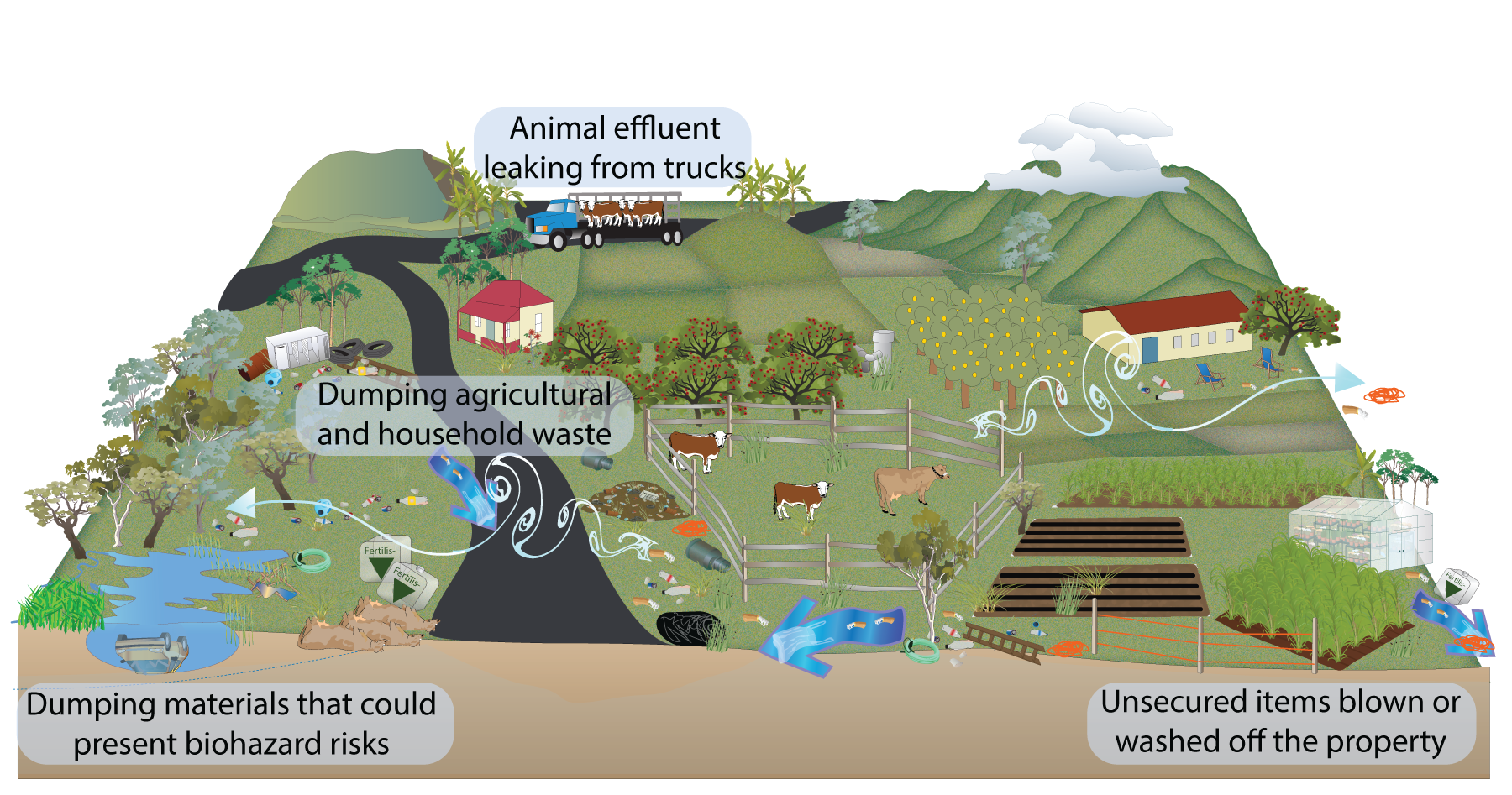 This waste pollution may result from:
In 2018, the Queensland Government studied littering and illegal dumping along Gillies Range Road near Cairns. Waste material was found on roads, in pullover facilities and in the World Heritage-listed forest adjoining the road. Types of items found included whitegoods, cars, tyres, mattresses, plastic buckets, cardboard, metal drums and general waste (including a large numbers of drink containers). Another study compiled a significant dataset of littering and dumping activity in South West Queensland’s Darling Downs and Surat Basin areas. The study found 27 litter types and more than 4000 individual items. Food and drink-related products were the most common items, followed by vehicle items (car seats, mirrors etc.) and cigarettes. The dominant material type was plastic, followed by glass. Roads waste moves through the environment via four pathways: Management Interventions suitable for rural roads include:
References
Last updated: 14 April 2025 This page should be cited as: Department of Environment, Science and Innovation, Queensland (2025) Roads, WetlandInfo website, accessed 8 May 2025. Available at: https://wetlandinfo.des.qld.gov.au/wetlands/management/pressures/litter-illegal-dumping/sources/roads/ |
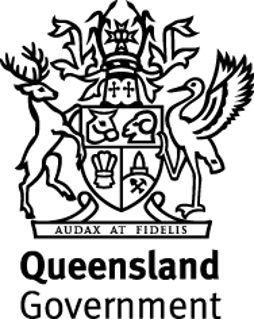
 — Department of the Environment, Tourism, Science and Innovation
— Department of the Environment, Tourism, Science and Innovation

